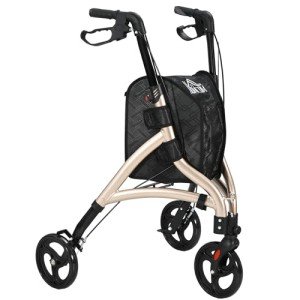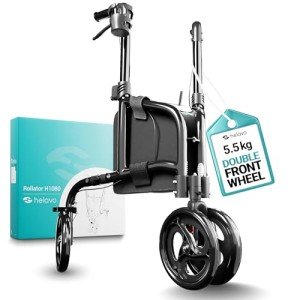
Mobility Aid
Add a review FollowOverview
-
Founded Date March 21, 1924
-
Sectors Health Science Services
-
Posted Jobs 0
-
Viewed 84
Company Description
Medical Walker Is The Next Hot Thing In Medical Walker

Understanding Medical Walkers: A Comprehensive Guide
Medical walkers serve as important mobility aids for people recuperating from surgery, handling chronic health problems, or handling age-related mobility issues. These gadgets not just improve physical self-reliance however likewise enhance safety, enabling users to browse their environments with higher ease. This post checks out the types, benefits, functions, and considerations connected with medical walkers, along with some regularly asked questions.

Table of Contents
- Types of Medical Walkers
- Benefits of Using a Medical Walker
- Secret Features to Consider
- Frequently Asked Questions
- Conclusion
1. Kinds Of Medical Walkers
Medical walkers are available in various styles, catering to different requirements and choices. The main types consist of:
| Type of Walker | Description |
|---|---|
| Standard Walker | A rectangular frame with 4 legs, providing stability and support. |
| Two-Wheeled Walker | Similar to a basic walker however geared up with wheels at the front for easier motion. |
| Three-Wheeled All-Terrain Walker with Flat-Free Tires – Buy Now! | A Arebos Lightweight Rollator With Seat & Bag walker with 3 wheels, enabling more maneuverability, suitable for indoor use. |
| Rollator Walker | A walker with 4 wheels, hand brakes, and a seat, appropriate for longer ranges and resting needs. |
| Hemi Walker | Created for individuals who can use just one hand, including a tripod-like design. |
2. Benefits of Using a Medical Walker
Using a medical walker provides several benefits that contribute to the user’s general well-being, including:
- Increased Stability: Walkers supply a stable base of assistance, lowering the danger of falls.
- Improved Mobility: They make it possible for users to walk around more easily, promoting independence.
- Discomfort Relief: By redistributing weight, walkers can ease discomfort in the joints, particularly in the hips and knees.
- Posture Support: These devices encourage proper posture, lowering strain on the back.
- Improved Confidence: Users frequently feel more protected using walkers, resulting in better self-esteem and increased activity levels.
3. Key Features to Consider
When picking a medical walker, it’s crucial to assess different features to find the ideal fit. Here are some vital aspects to think about:
- Weight Capacity: Ensure the walker can support the user’s weight while maintaining stability.
- Height Adjustment: Look for a walker with adjustable height settings to accommodate the user’s height and supply comfortable grip.
- Material: Lightweight 3-Wheeled Tri Walker: Comfort & Convenience aluminum walkers are simpler to navigate, while steel walkers offer stronger assistance however might be much heavier.
- Wheel Quality: If selecting a wheeled walker, consider the wheel size and tread. Larger wheels navigate uneven surfaces more quickly.
- Seat Availability: If users will be walking for longer periods, a walker with an integrated seat can offer rest breaks when needed.
- Brakes: Hand brakes are particularly important for safety in rollator walkers to control speed and stop when needed.
Types of Walkers with Features Comparison Table
| Walker Type | Weight Capacity | Height Adjustment | Wheels | Seat Available | Brakes |
|---|---|---|---|---|---|
| Requirement Walker | Up to 300 pounds | Yes | No | No | No |
| Two-Wheeled Walker | Approximately 300 pounds | Yes | Yes | No | No |
| Three-Wheeled Walker | As much as 250 lbs | Yes | Yes | No | No |
| Rollator For Petite Walker | Up to 400 lbs | Yes | Yes | Yes | Yes |
| Hemi Walker | Up to 250 lbs | Yes | No | No | No |
4. Often Asked Questions
Q1: Who need to use a medical walker?A: Medical walkers are advantageous for people recovering from surgical treatment, experiencing balance problems, or requiring assistance due to age-related mobility difficulties. Q2: Can a medical walker be adjusted?A: Yes, most
medical walkers are height-adjustable to accommodate various user heights, enabling a more comfy grip. Q3: How do I select the right walker for my needs?A: Consider factors such as the
user’s weight, height, kind of mobility concerns, and whether they need a seat or brakes. Checking the walker for convenience and stability before purchase is likewise a good idea. Q4: Are there any safety suggestions related to using a medical walker?A: Yes, users should ensure they do not lean too
greatly on the walker, use it on steady and level surfaces, and always ensure
the brakes are engaged when seated or fixed. Q5: Can walking with a medical walker aid with rehabilitation?A: Absolutely. Medical walkers are often advised as part of rehabilitation programs as they encourage
physical activity, which aids in healing and mobility enhancement. 5.
Conclusion Medical walkers play a vital function in enhancing the quality of life for people facing mobility difficulties. With numerous types and features readily available, picking the ideal walker involves thinking about the user’s specific requirements and situations. By comprehending their benefits and appropriate use, people can gain back self-reliance, improve their mobility, and navigate their environments securely. Whether for short-term recovery or long-lasting support, the best medical walker can considerably boost a user’s overall wellness. Integrating a medical walker into one’s day-to-day routine can be a transformative decision, making it simpler to take part in life’s day-to-day activities while making sure safety and self-confidence.


